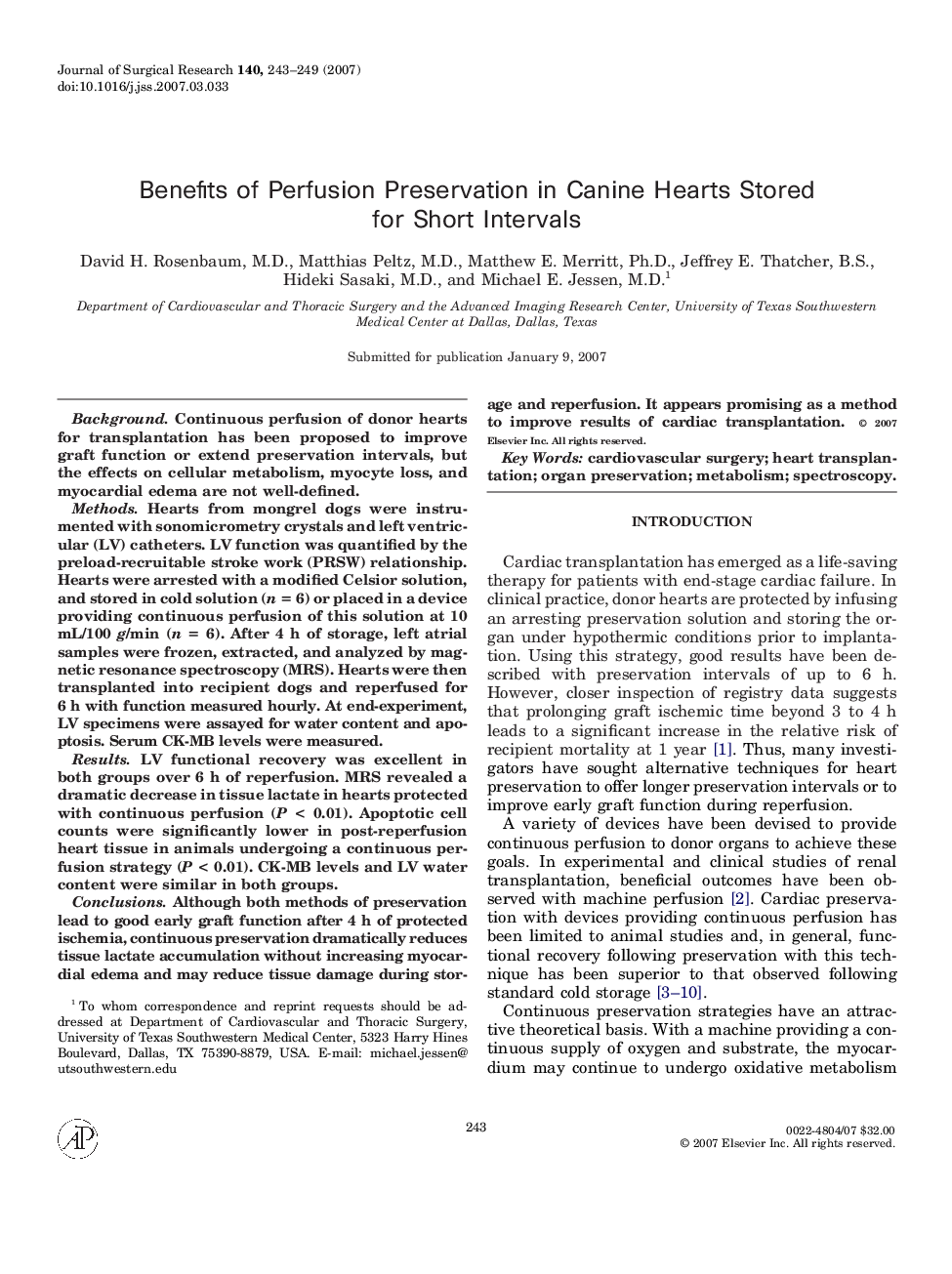| Article ID | Journal | Published Year | Pages | File Type |
|---|---|---|---|---|
| 4304872 | Journal of Surgical Research | 2007 | 7 Pages |
BackgroundContinuous perfusion of donor hearts for transplantation has been proposed to improve graft function or extend preservation intervals, but the effects on cellular metabolism, myocyte loss, and myocardial edema are not well-defined.MethodsHearts from mongrel dogs were instrumented with sonomicrometry crystals and left ventricular (LV) catheters. LV function was quantified by the preload-recruitable stroke work (PRSW) relationship. Hearts were arrested with a modified Celsior solution, and stored in cold solution (n = 6) or placed in a device providing continuous perfusion of this solution at 10 mL/100 g/min (n = 6). After 4 h of storage, left atrial samples were frozen, extracted, and analyzed by magnetic resonance spectroscopy (MRS). Hearts were then transplanted into recipient dogs and reperfused for 6 h with function measured hourly. At end-experiment, LV specimens were assayed for water content and apoptosis. Serum CK-MB levels were measured.ResultsLV functional recovery was excellent in both groups over 6 h of reperfusion. MRS revealed a dramatic decrease in tissue lactate in hearts protected with continuous perfusion (P < 0.01). Apoptotic cell counts were significantly lower in post-reperfusion heart tissue in animals undergoing a continuous perfusion strategy (P < 0.01). CK-MB levels and LV water content were similar in both groups.ConclusionsAlthough both methods of preservation lead to good early graft function after 4 h of protected ischemia, continuous preservation dramatically reduces tissue lactate accumulation without increasing myocardial edema and may reduce tissue damage during storage and reperfusion. It appears promising as a method to improve results of cardiac transplantation.
